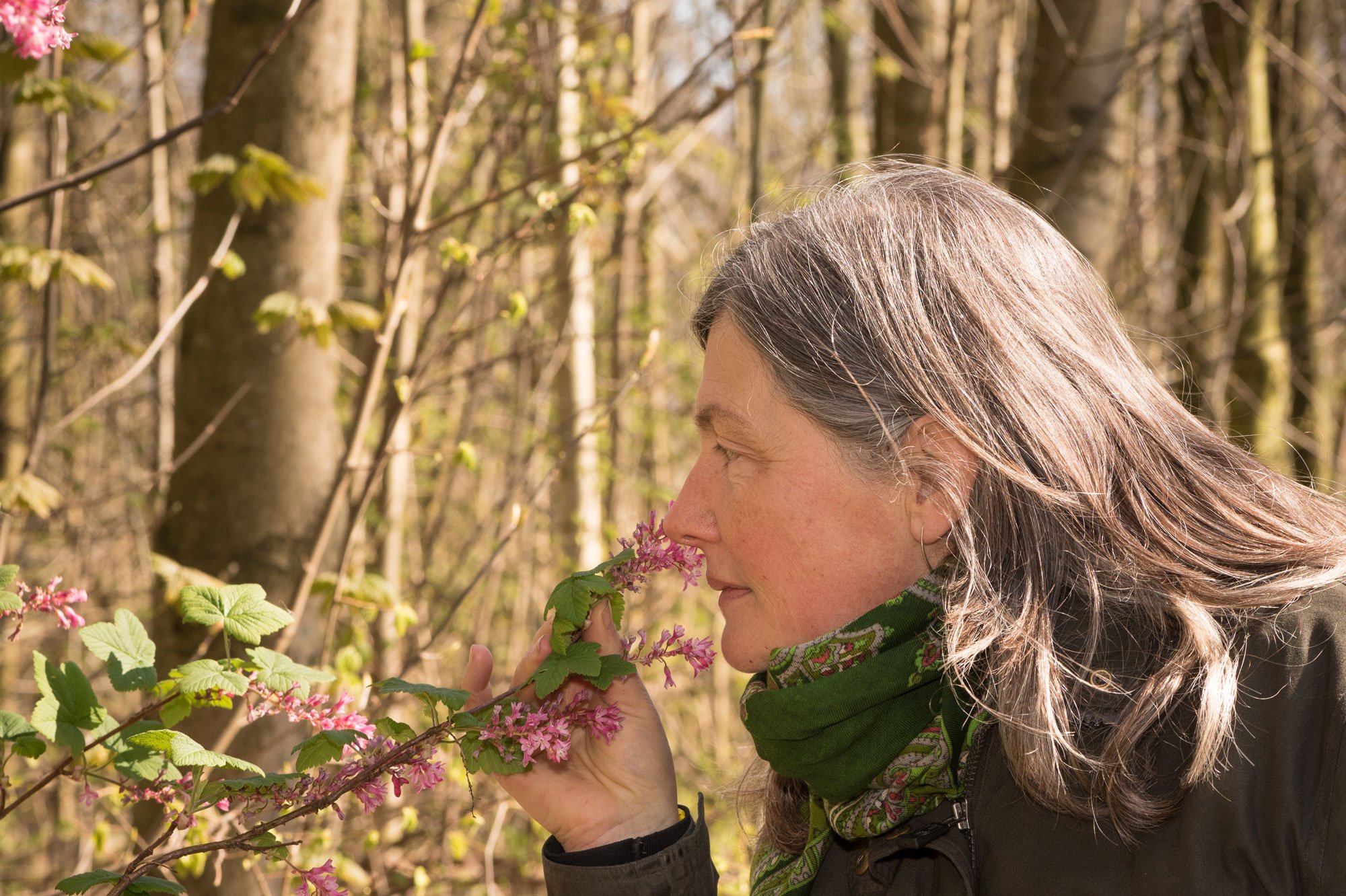Triggered by a love of nature and a desire for tastier food, Amsterdam resident Ellen Mookhoek left her office job and stopped buying tasteless food in supermarkets to become a modern hunter-gatherer. Now she feeds her family with the deer, rabbits and game she shoots and the plants she gathers.
Takeaways
- Wild rocket (arugula), wild garlic, wild onion, dandelion, elderflower and dogwood cherries are all tasty foods you can find growing in a city like Amsterdam.
- It’s important just to pick what you need; leave enough of the plant behind.
- Foraging for edible plants is also about learning how to slow down and be conscious of your surroundings.
- The edges of the city are best for foraging, as there are more green areas.
- There are plenty of urban foraging communities and classes on how to find and recognise edible foods in the wild.
Driven by a desire to connect more with nature, and to eat “purer” food, with more flavour than what she could buy in the supermarket, Ellen Mookhoek left her job 12 years ago and took a leap into the unknown. “Back then, being in an office all day was making me depressed. My husband and I didn’t feel we could afford to lose my income, but we decided to take the leap anyway. I felt like a pioneer, calculating how much we really needed to get by, how much we needed for essentials like flour, sugar, salt and so on. I remember having an argument that first year with someone who was so angry with me he punctured the tyre of my car. I had to choose between a new tyre or new shoes for my young son. Without my car I wouldn’t be able to go out into nature so I used the money to fix the car. I figured my son could just wear his wellingtons, though I still feel somewhat guilty, thinking back.”
“The milky sweet taste of a fresh potato taken out of the ground at the right time and eaten immediately – no store-bought potato can compete with that”
She became committed to growing her own vegetables. “The milky sweet taste of a fresh potato taken out of the ground at the right time and eaten immediately – no store-bought potato can compete with that.” It was on her allotment that her journey to become a forager began. “As I was preparing the soil for planting, quite a laborious task, I realised that I was removing edible weeds. Why waste them? I thought.” She went on to read books about plant life the Netherlands, teaching herself everything she needed to know about edible plants – not only to become a forager herself, but to teach others too. “I studied history at university so I was used to doing research, and to telling stories. Gathering fruit and edible plants has always been in my nature. I grew up in the countryside and it was something I loved to do as a child, picking berries and walnuts, even stealing apples from an orchard in my hometown.”


Respect the source
Ellen says there are many edible wild plants in Amsterdam. “Wild rocket (arugula), wild garlic and wild onion, dandelion, elderflower and dogwood, with its delicious cherries that taste like cranberries – you can find them all over the city. And then there are the thousands of elm trees along the canals. When they bloom in spring, they bear papery, light green, immature fruits, before they start leafing out. The developing seeds in the oval-shaped discs turn pinker as they approach maturity. They’re not only beautiful to look at, but are also surprisingly delicious.” Ellen says the edges of the city are best for foraging, where there are more green areas, and less pollution from visiting crowds. She points out that it is important to respect the place you pick from, and to leave enough of the plant behind. “Just pick what you need. Don’t clean everything out.”
Foraging has become a lifestyle for Ellen, one that she gladly passes on to others. She gives workshops in foraging plants, taking people through urban areas, showing them where, how and what to pick. But she also asks people to slow down. “Most people walk way too fast, they don’t give proper attention to their surroundings, never mind spotting edible plants. You might need to walk fast for your physical health, but wild foraging demands slower walking, being in touch with nature, becoming conscious of what you can and cannot eat.”
Experimenting with roadkill
Around the time Ellen got into foraging, she also thought about how she could become a more sustainable meat eater. She first experimented with roadkill. “Usually most of the meat on roadkill is ‘dirty’, there’s not enough edible meat left on the animal. Although there are some exceptions, like when we drove past a dead animal on the road when I was holidaying in France with my family and friends. I instinctively backed up the car to pick it up. I cleaned it, cooked it, and even my friend, who hardly ever eats meat, thought it was ‘finger-lickin’ good’!” Ellen’s mind was made up. The taste was so superb she wanted to pursue eating “wild meat” and, even though she had never pictured herself as a hunter, enrolled for a hunting course.
“Not only does wild meat taste better, it’s more honest. Most people don’t really think about where the salami slices on their pizza, for instance, actually come from”
She says she’s not opposed to the idea of shooting animals. On the contrary, if it’s done within the rules of the law and with proper knowledge of, and respect for, the animal, she says she’d much rather have wild meat on her plate than a neatly packaged supermarket product. “Not only does it taste better, it’s more honest. Most people don’t really think about where the salami slices on their pizza, for instance, actually come from. Even people who aren’t opposed to (ethical) hunting, often can’t handle being confronted by a real dead animal; they’d rather someone shoots it for them. I decided I wanted to do it myself.”
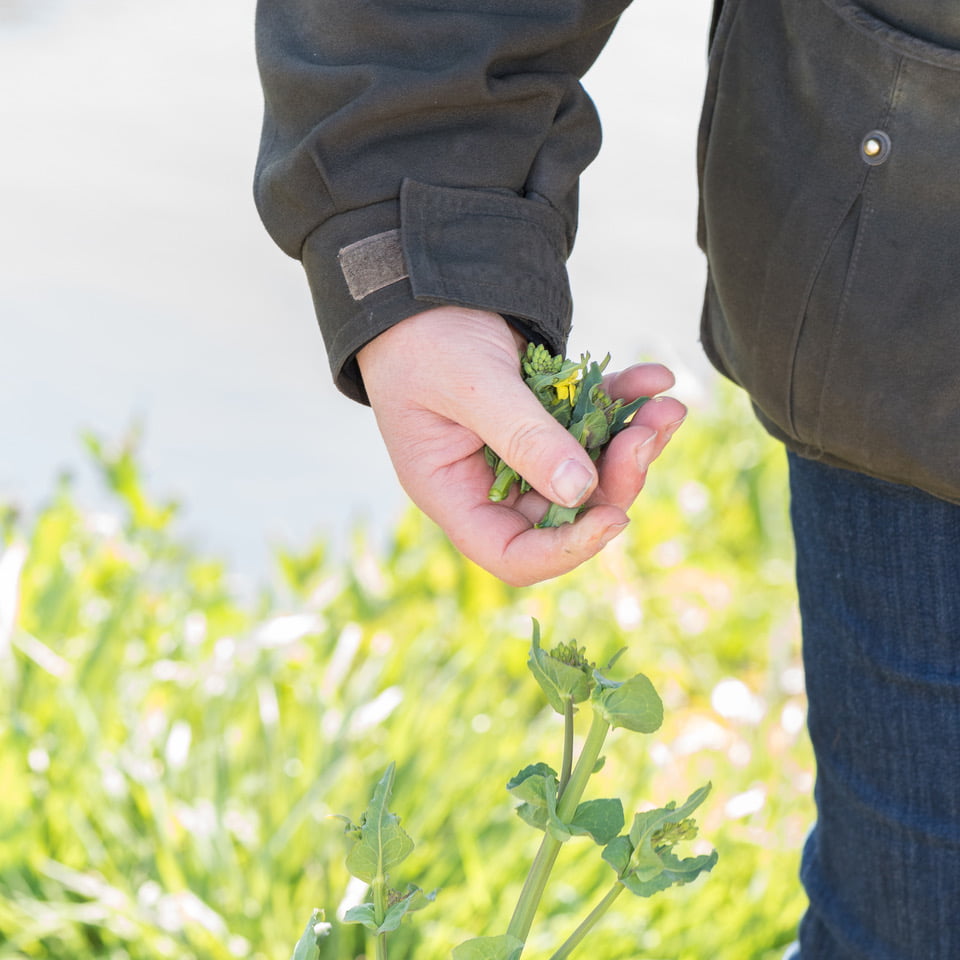
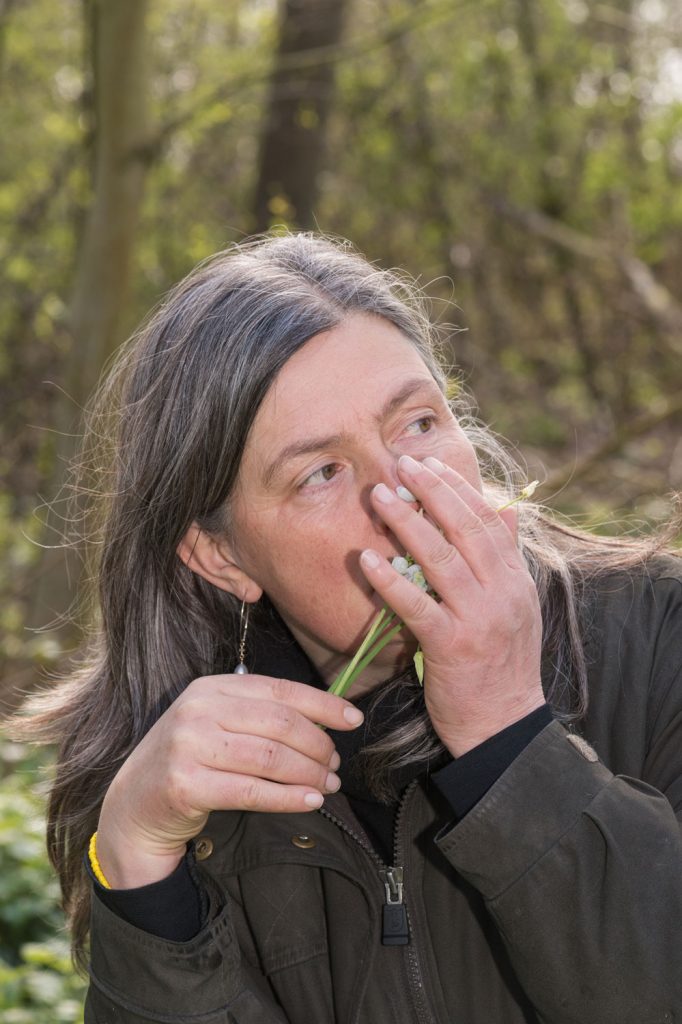
Overcoming differences
On the hunting course, she found she didn’t have much in common with the other participants. Most of them were male, over 50, and interested in country sports. Nonetheless, by the end of the course, she had made some lifelong friendships. “I never thought I would befriend men 20 years my senior; I’d never really had male friends before. Of course, some of them had a patriarchal attitude, but like in other situations, you can avoid the more disagreeable types and look for those you have something in common with. Most of them weren’t used to having a woman in the group, so we sometimes had to overcome our differences.” One of her new friends, a hunter and teacher on the course, owned a large piece of land with roe deer. Once Ellen had her hunting license, he invited her over to shoot. As she had done with the plants, she prepared herself thoroughly, learning all she could about roe deer, fawns and stags. She visited the site no less than 12 times before she was ready.
Her hunter friend was in for a bit of a surprise. He didn’t know Ellen well when he’d invited her, so when he saw her on the day of the shoot, he had not expected to find her relaxing in his garden in a beaded bikini. “It was an extremely warm summer day,” explains Ellen. “I’d arrived early and put on my bikini to enjoy some sunshine while I waited. Judging by the startled look on his face, he seemed to doubt whether I was the right person for the job. I hesitated for a split second but decided to just to be myself. Why shouldn’t someone in a beaded bikini be a capable hunter?”


Having soaked up the sun, Ellen changed into her hunting gear. “It was the first time I was to shoot a larger animal and I was nervous. This wasn’t a shooting gallery in a funfair. It needed to be a good shot, for the animal, but also because you don’t want to waste meat or hide.” Ellen did a good job and proudly reported to her surprised host that she had put down a stag, with a perfect shot. Initially she had been invited to shoot a fawn, but over the weeks the hunting season and changed, as prescribed by Dutch law, and it was now stag season.
But her job wasn’t done. After leaving the deer in the freezer of a local restaurant for 48 hours, she transported it to her apartment in Amsterdam. “I figured the ticks – which most animals are crawling with in summer – would not survive freezing. But when the cold stag lay on my newspaper-covered kitchen table, the letters on the newspaper started shifting in front of my eyes; the ticks were not dead. They were crawling all over the place!” Ellen had to kill them and put them, with the hide, into a sealed bag before she could get down to the job of deboning and portioning the meat.
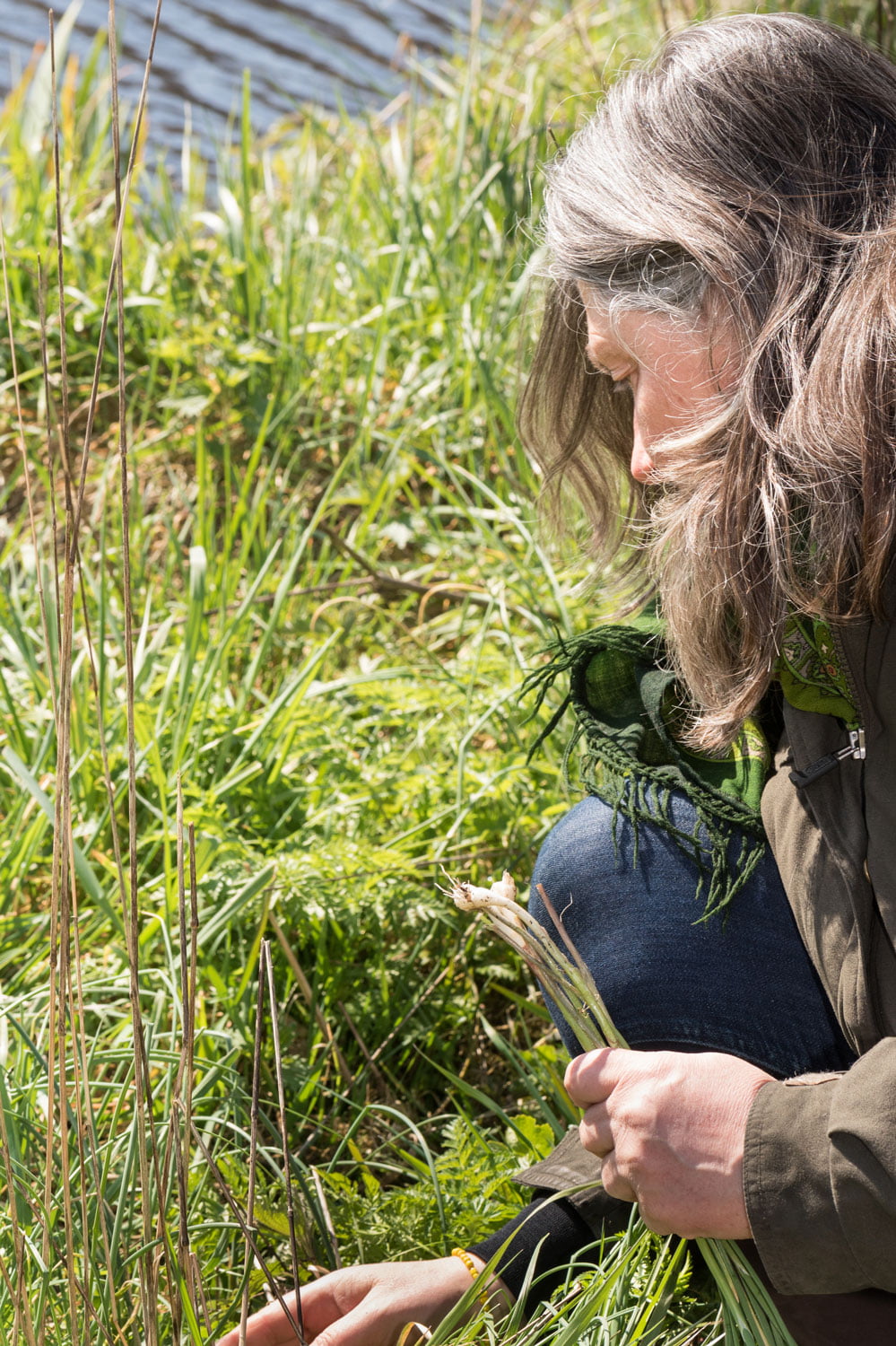
Teaching, cooking and writing
Since receiving her hunting certificate, seven years ago, Ellen has been able to regularly put meat on the table for her family, and occasionally her friends’ tables too. Besides hunting and gathering she loves sharing her knowledge. “It would be too lonely, keeping this to myself, I love being among people,” she says. She has written a book in Dutch about her urban foraging, ‘De Eetbare Stad’ (The Edible City), continues to give workshops, not just to private individuals and groups, but to companies too, on foraging but also on “mushroom basics” and wild game cooking. Her clients, who share her love for “good food and pure tastes” include professional and amateur chefs. “Good amateur chefs spend a lot of time finding the best quality products, preferring natural, unprocessed foods. I show them where to look and what to look for, as well as how to prepare wild game; from skinning to deboning and portioning. I love cooking and experimenting with slow food. I write a magazine column for the Royal Dutch Hunters Association, where I like sharing some of my recipes. I have no desire to become a chef myself; I enjoy teaching more. “When people sign up for one of my wild game workshops, they have to get their hands dirty, preparing and cooking everything themselves. Experiencing something yourself is the best way to learn.”
A popular pastime
Hunter-gatherers were most common in prehistory as nomadic groups across Africa, Asia and Europe, following animal herds and picking wild plants on the way. Although most of us live very differently today, hunter-gatherer communities still survive in some parts of the world. In modern society foraging primarily encompasses picking strawberries and blackberries on countryside walks. Recently however, a different kind of foraging has sprung up in cities throughout the world. In New York and Amsterdam for instance, there are urban foraging communities, and classes on where to pick and what is safe to eat. Looking for edible plants has become a popular pastime for many people exploring a more sustainable lifestyle.
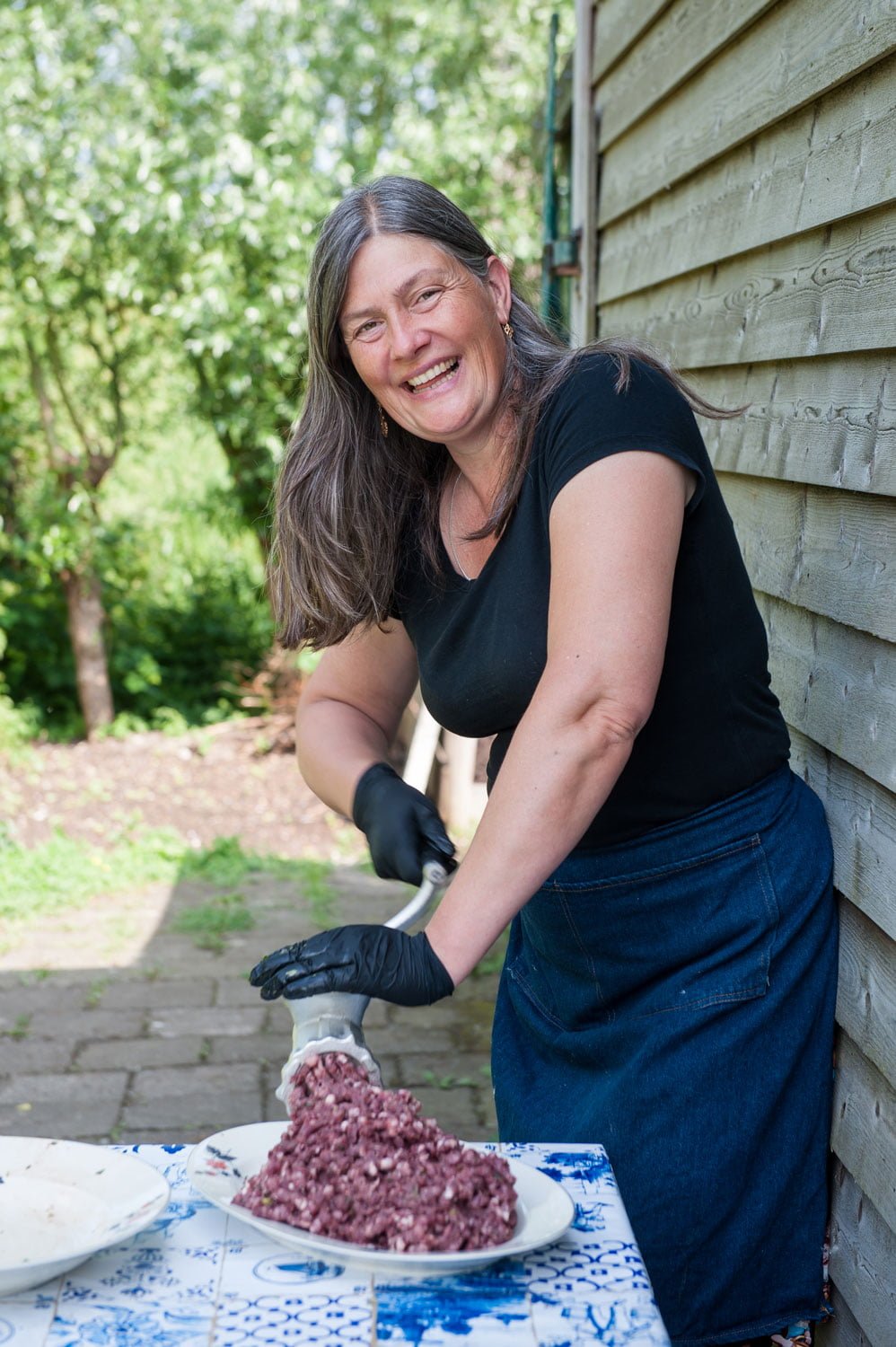
Photo: Anoeska Slechtenhorst
